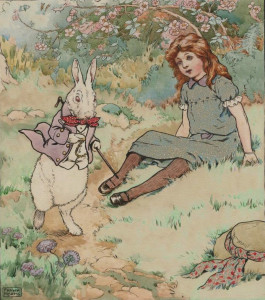 Yesterday, the Supreme Court announced their decision in Alice Corporation Pty. Ltd. v. CLS Bank International, which invalidated the patents at issue. There’s a “big picture” here, but there’s some smaller, more intriguing parts of the decision that are going to keep our brains working for the next few days.
Yesterday, the Supreme Court announced their decision in Alice Corporation Pty. Ltd. v. CLS Bank International, which invalidated the patents at issue. There’s a “big picture” here, but there’s some smaller, more intriguing parts of the decision that are going to keep our brains working for the next few days.
On the big picture side, the Court said simply implementing a well-known abstract concept using software does not make that abstract concept patentable, a fairly common-sense, widely supported proposition. The court was also clear that software patents (i.e. method patents) were permissible, so long as the claims were not solely an abstract idea. They also said you can’t magically transform an abstract idea into something patentable merely by implementing it in a generic computer.
So what are those side issues? First, there’s significant lack of clarity about how to determine what is an “abstract idea.” Indeed, the Court deliberately avoided defining what they mean by “abstract idea” – stating that “we need not labor to delimit the precise contours of the ‘abstract ideas’ category in this case. It is enough to recognize that there is no meaningful distinction between the concept of risk hedging in Bilski Second, the Court evaluated the patents at issue using the two steps set forward in Mayo Collaborative Services v. Prometheus Laboratories, Inc., 132 S.Ct. 1289 (2012). In both Mayo and Alice, it appears that court is merging patentability under 35 U.S. C. §101, §102 and §103 into one standard. For those of you reading this who are not patent attorneys, a patent must contain patentable subject matter (§101), be novel (§102), and non-obvious (§103). Normally, tests for patentability are broken into these very separate categories. For example, you can’t patent a rock – it exists in nature and you can’t patent things you discover, therefore it’s not patentable subject matter. But what if your “invention” is to throw a rock – that’s still not patentable. But what if you build a catapult? The catapult merely replaces your arm when it comes to throwing. But no one would argue that the act of throwing a rock makes the invention of a complex machine like a catapult “obvious” nor do we think the first catapult fails a novelty test (just ask the enemies of the greeks back in 399 BC)! In fact, nearly every patentable machine you can think of probably replaces some activity that was previously done by hand. I understand these are vastly different topics which apply different aspects of patent law (i.e. mechanical implementation by humans v. computer implementation by humans) but illustrates the argument without delving into complicated subject matter. So how is the court merging the ideas of §101, §102, and §103? The Court said that “the claims before us are drawn to the concept of intermediated settlement, i.e., the use of a third party to mitigate settlement risk. Like the risk hedging in Bilski, the concept of intermediated settlement is “a fundamental economic practice long prevalent in our system of commerce.” This is a conclusion that does not turn on whether the claimed invention is abstract or not – but whether it is new, a requirement under §102. They further said that if your patent application fails the §101 test because it’s “merely an abstract idea” you can somehow get back into the game by “adding additional features”, further “those additional features cannot be well known in the art”. But “well known in the art” goes to obviousness (§103). Alice stretches the confusion about software patents further, by saying abstract method claims implemented by a generic computer are not patentable if the additional features implemented in the computer are “well known in the art”. Well, pretty much every computer program is simply built up of pieces of code that are “well known in the art”. This is problematic, since it fails to provide innovative businesses and software developers parameters for patent-eligible software. Clarity in patentability is needed for both those who are interested in protecting their inventions by patents and for those who build software to know whether patents that have been granted are legitimate or over-reaching. It’s this uncertainty that patent trolls thrive on. It’s clear that the USPTO is going to have some work to do as they figure out implementation of Alice. If we’re not careful, we’ll find ourselves well down the rabbit hole. We’d rather not have to automatically refer all §101 decisions by the courts and USPTO to the Supreme Court; only they can see whether a film is obscene or a patent claim abstract.